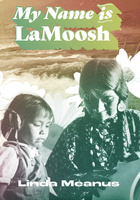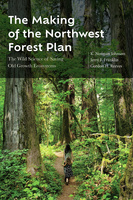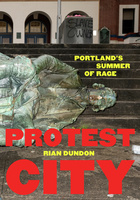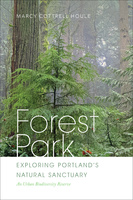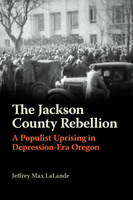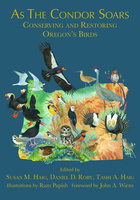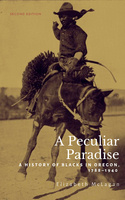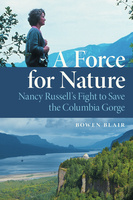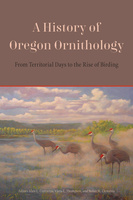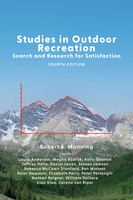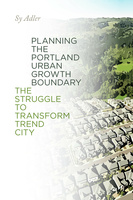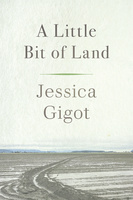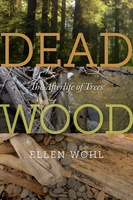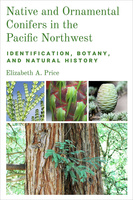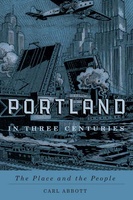Oregon State University Press
For fifty years, Oregon State University Press has been publishing exceptional books about the Pacific Northwest—its people and landscapes, its flora and fauna, its history and cultural heritage. The Press has played a vital role in the region’s literary life, providing readers with a better understanding of what it means to be an Oregonian. Today, Oregon State University Press publishes distinguished books in several academic areas from environmental history and natural resource management to indigenous studies.
My Name is LaMoosh
My Name is LaMoosh is the life story of Warm Springs Tribal Elder Linda Meanus. She grew up with her grandma Flora Thompson and grandpa Chief Tommy Thompson near Celilo Falls, a mighty fishery on the Columbia that was flooded in 1957 by the construction of The Dalles Dam. Linda persevered through this historic trauma and life’s challenges to teach young people about the Indigenous ways of the Columbia River. Intended for early readers to learn more about Native American history through a first-hand account, the book is also a reminder that Indigenous people continue to maintain a cultural connection to the land and river that gave them their identity.
My Name is LaMoosh includes fact boxes that provide historical, cultural, and environmental context for Linda’s personal story. Hundreds of books exist about Lewis and Clark and their journey of “discovery.” This book balances our understanding of American history with the long-neglected voices of Indigenous people. Linda’s story is not just about historic trauma but also about resilience, perseverance, and reciprocity.
Published in cooperation with Confluence
The Making of the Northwest Forest Plan
The Wild Science of Saving Old Growth Ecosystems
Protest City
Photographing Portland's Summer of Rage
The Jackson County Rebellion
A Populist Uprising in Depression-Era Oregon
The Jackson County Rebellion explores a dramatic if little-known populist insurgency that captured national attention as it played out in rural Oregon. Jeffrey LaLande traces the rebellion’s roots back to the area’s tradition of protest, including the Ku Klux Klan of the 1920s, then focuses on Jackson County’s politics of upheaval during the worst days of the Great Depression. The broad strokes of the episode may be familiar to contemporary readers, with demagogues fanning rage and relentlessly accusing an elite of corruption and conspiracy.
Two inflammatory local newspapers, one owned by wealthy orchardist Llewellyn Banks and the other by politician Earl Fehl, became the vehicles by which these men won followers. Partners in demagoguery, Banks and Fehl created a movement that very nearly took over county government through direct action, ballot theft, and threats of violence. Among those opposing the two men was Harvard-educated Robert Ruhl, owner/editor of the Medford Mail Tribune. Despite boycotts and threats of sabotage, Ruhl ran a resolute editorial campaign against the threat in his Mail Tribune, which won a Pulitzer Prize for its reporting on the uprising.
The rebellion blazed hotly but not for long. Its end was marked by the arrest of its leaders after the fiercely contested 1932 election and by Banks’s murder of the police officer sent to arrest him. Placing the Jackson County Rebellion squarely within America’s long tradition of populist uprisings against the perceived sins of an allegedly corrupt, affluent local elite, LaLande argues that this little-remembered episode is part of a long history of violent conflict in the American West that continues today.
As the Condor Soars
Conserving and Restoring Oregon's Birds
As the Condor Soars focuses on the increasing role that ornithologists played in public agencies, changing ideas about ecosystems, and conservation debates in Oregon. These themes are most clearly seen in the battles over the northern spotted owl and the development of the Northwest Forest Plan. Contributors to this volume also discuss new developments in the study of birds, such as sound studies, and connections between ornithologists and artists. The volume includes illustrations by Ram Papish.
A Peculiar Paradise
A History of Blacks in Oregon, 1788-1940
Published in cooperation with Oregon Black Pioneers
A Peculiar Paradise: A History of Blacks in Oregon, 1788–1940, remains the most comprehensive chronology of Black life in Oregon more than forty years after its original publication in 1980. Elizabeth McLagan’s work reveals how in spite of those barriers, Black individuals and families made Oregon their home and helped create the state’s modern Black communities. A longtime resource for those seeking information on the legal and social barriers faced by people of African descent in Oregon, the book is available again through this co-publication with Oregon Black Pioneers, Oregon’s statewide African American historical society. The revised second edition includes additional details for students and scholars, an expanded reading list, a new selection of historic images, and a new foreword by Gwen Carr and afterword by Elizabeth McLagan.
A Force for Nature
Nancy Russell's Fight to Save the Columbia Gorge
A Force for Nature is a biography of a person and a place. It describes how Nancy Russell, a woman with no political, fundraising, or organizing experience, mounted a national campaign to overcome eighty years of conflict—some of it later directed at her through slashed tires and death threats—to protect the Columbia River Gorge, one of the nation’s most scenic, historic, and threatened landscapes.
A History of Oregon Ornithology
From Territorial Days to the Rise of Birding
The study of birds was, in its early years, often driven by passionate amateurs in a localized context. A History of Oregon Ornithology takes readers from the Lewis and Clark expedition, through the professionalization of the field, and to the mid-twentieth century, focusing on how birding and related amateur field observation grew outside the realms of academia and conservation agencies.
Editors Alan Contreras, Vjera Thompson, and Nolan Clements have assembled chapters exploring the differences and interplay between the amateur and professional study of birds, along with discussions of early birding societies, notable observers, and ornithological studies. The book includes chapters on such significant ornithologists as Charles Bendire, William L. Finley, Ira Gabrielson, Stanley Jewett, and David B. Marshall. It also notes the sometimes-overlooked contributions of women to our expanding knowledge of western birds. Special attention is paid to the development of seabird observation, the impact of the Internet, and the rise of digital resources for bird observers.
Intended for readers interested in the history of Oregon, scientific explorations in the West, and the origins of modern birding and field ornithology, A History of Oregon Ornithology offers a detailed and entertaining account of the study of birds in the Pacific Northwest.
Studies in Outdoor Recreation
Search and Research for Satisfaction
Studies in Outdoor Recreation is a standard text in courses on parks and outdoor recreation, a guide to the scholarly literature for graduate students and researchers, and a reference book for managers and practitioners. The first book to review the social science literature on outdoor recreation, it examines studies from this broad, interdisciplinary field, integrates them into coherent chapters on relevant issues and topics, and synthesizes research findings into a body of knowledge. The final chapter presents a series of principles designed to guide park and outdoor recreation research and inform park and wilderness management. The book includes an extensive bibliography of 2,000 references and a guide to the social science literature that leads readers to primary source materials.
This fourth edition is fully updated and revised to reflect current research and new issues in the field, such as the evolving meaning of parks and wilderness, new models of parks, sustainable transportation in outdoor recreation, equitable access to outdoor recreation opportunities, the role of outdoor recreation in physical and mental wellbeing, the effects of climate change on outdoor recreation use and management, and theoretical and empirical issues in outdoor recreation research.
Contributors to the fourth edition include Laura Anderson, Megha Budruk, Kelly Goonan, Jeffrey Hallo, Daniel Laven, Steven Lawson, Rebecca Stanfield McCown, Ben Minteer, Peter Newman, Elizabeth Perry, Peter Pettengill, Nathan Reigner, William Valliere, Carena van Riper, and Xiao Xiao.
Planning the Portland Urban Growth Boundary
The Struggle to Transform Trend City
In this companion volume to his 2012 book Oregon Plans: The Making of an Unquiet Land-Use Revolution, Sy Adler offers readers a deep analysis of planning Portland’s Urban Growth Boundary. Required by one of Oregon’s nineteen statewide planning goals, a boundary in the Portland metropolitan area was intended to separate urban land and land that would be urbanized from commercially productive farmland. After adopting the goals, approving the Portland growth boundary in 1979 was the most significant decision the Oregon Land Conservation and Development Commission has ever made, and, more broadly, is a significant milestone in American land-use planning.
Planning the Portland Urban Growth Boundary primarily covers the 1970s. Innovative regional planning institutions were established in response to concerns about sprawl, but planners working for those institutions had to confront the reality that various plans being developed and implemented by city and county governments in metro Portland would instead allow sprawl to continue. Regional planners labeled these as “Trend City” plans, and sought to transform them during the 1970s and thereafter.
Adler discusses the dynamics of these partially successful efforts and the conflicts that characterized the development of the Portland UGB during the 1970s—between different levels of government, and between public, private, and civic sector advocates. When the regional UGB is periodically reviewed, these conflicts continue, as debates about values and technical issues related to forecasting future amounts of population, economic activity, and the availability of land for urban development over a twenty-year period roil the boundary planning process.
Planning the Portland Urban Growth Boundary is an authoritative history and an indispensable resource for anyone actively involved in urban and regional planning—from neighborhood associations and elected officials to organizations working on land use and development issues throughout the state.
A Little Bit of Land
From midwifing new lambs to harvesting basil, Jessica Gigot invites readers into rural life and explores the uncommon road that led her there. Fascinated by farming and the burgeoning local food movement, she spent her twenties wandering the Pacific Northwest as a farm intern and eventually a graduate student in horticulture, always with an eye towards learning as much as she could about how and why people farm. Despite numerous setbacks and the many difficulties of growing food, from soggy soil to rambunctious rams, she created a life for herself defined by resilience and a genuine love of nature.
In A Little Bit of Land, Gigot explores the intricacies of small-scale agriculture in the Pacific Northwest, the changing role of women in this male-dominated industry, and questions of sustainability, economics, and health in our food system. Gigot alternates between describing the joys and challenges of small farm life and reflecting on her formative experiences outdoors and in classrooms throughout the region—from Ashland in southern Oregon to the Skagit Valley in Washington state. Throughout, she discovers what it means to find roots, start a family, and cultivate contentment in this unique corner of the world.
A Little Bit of Land is a moving memoir about falling in love with a place and all its inhabitants. It will be relished by readers interested in regenerative agriculture, and anyone who is curious about what it means to live off and love the land.
Dead Wood
The Afterlife of Trees
The west is full of magnificent trees: mighty spruces, towering cedars, and stout firs. We are used to appreciating trees during their glory years, but how often do we consider what happens to a tree when it dies? We’ve all seen driftwood on the beach. But how many people have truly looked at it and appreciated its ecological role?
Ellen Wohl has thought about these questions, and In Dead Wood, she takes us through the afterlife of trees, describing the importance of standing and downed dead wood in forests, in rivers, along beaches, in the open ocean, and even at the deepest parts of the seafloor. Downed wood in the forest provides habitat for diverse plants and animals, and the progressive decay of the wood releases nutrients into the soil. Wood in rivers provides critical habitat for stream insects and fish and can accumulate in logjams that divert the river repeatedly across the valley floor, creating a floodplain mosaic that is rich in habitat and biodiversity. Driftwood on the beach helps to stabilize shifting sand, creating habitat for plants and invertebrates. Fish such as tuna congregate at driftwood in the open ocean. As driftwood becomes saturated and sinks to the ocean floor, collections of sunken wood provide habitat and nutrients for deep-sea organisms. Far from being an unsightly form of waste that needs to be cleaned from forests, beaches, and harbors, dead wood is a critical resource for many forms of life.
Dead Wood follows the afterlives of three trees: a spruce in the Colorado Rocky Mountains that remains on the floodplain after death; a redcedar in Washington that is gradually transported downstream to the Pacific; and a poplar in the Mackenzie River of Canada that is transported to the Arctic Ocean. With these three trees, Wohl encourages readers to see beyond landscapes, to appreciate the ecological processes that drive rivers and forests and other ecosystems, and demonstrates the ways that the life of an ecosystem carries on even when individual members of that system have died. Readers will discover that trees can have an exceptionally rich afterlife—one tightly interwoven with the lives of humans and ecosystems.
Native and Ornamental Conifers in the Pacific Northwest
Identification, Botany and Natural History
Most conifer guides available for the Pacific Northwest focus on native species observed in the wild. Native and Ornamental Conifers in the Pacific Northwest presents an integrated perspective for understanding and identifying conifers in any landscape where native and ornamental species grow alongside each other. It is suitable for landscape designers, horticulturalists, arborists, gardeners, environmental scientists, and botanists.
Based on her experiences teaching workshops on conifer identification and cultivation, Elizabeth Price has developed Jargon-free photographic charts, which allow for side-by-side comparison of conifer features and guide the reader to species identification. The charts are detailed enough for specialists yet accessible to amateurs.
The book includes extensive material on the characteristics, botany, and natural history of conifer plant families, genera, and species, all illustrated with original photographs. Research across many disciplines is blended with direct observation and personal experience, creating a book that goes beyond identification and is both rigorous and engaging.
Portland in Three Centuries
The Place and the People
A compact and comprehensive history of Portland from first European contact to the twenty-first century, Portland in Three Centuries introduces the women and men who have shaped Oregon’s largest city. The expected politicians and business leaders appear, but Carl Abbott also highlights workers and immigrants, union members and dissenters, women at work and in the public realm, artists and activists, and other movers and shakers.
Incorporating social history and contemporary scholarship in his narrative, Abbott examines current metropolitan character and issues, giving close attention to historical background. He explores the context of opportunities and problems that have helped to shape the rich mosaic that is Portland.
This revised and updated second edition includes greater attention to the Indigenous peoples of the Portland region, Portland’s communities of color, and the challenges of recent years that have thrust Portland into the national spotlight.
A highly readable character study of a city, and enhanced by more than sixty historic and contemporary images, Portland in Three Centuries will appeal to readers interested in Portland, in Oregon, and in Pacific Northwest history.

